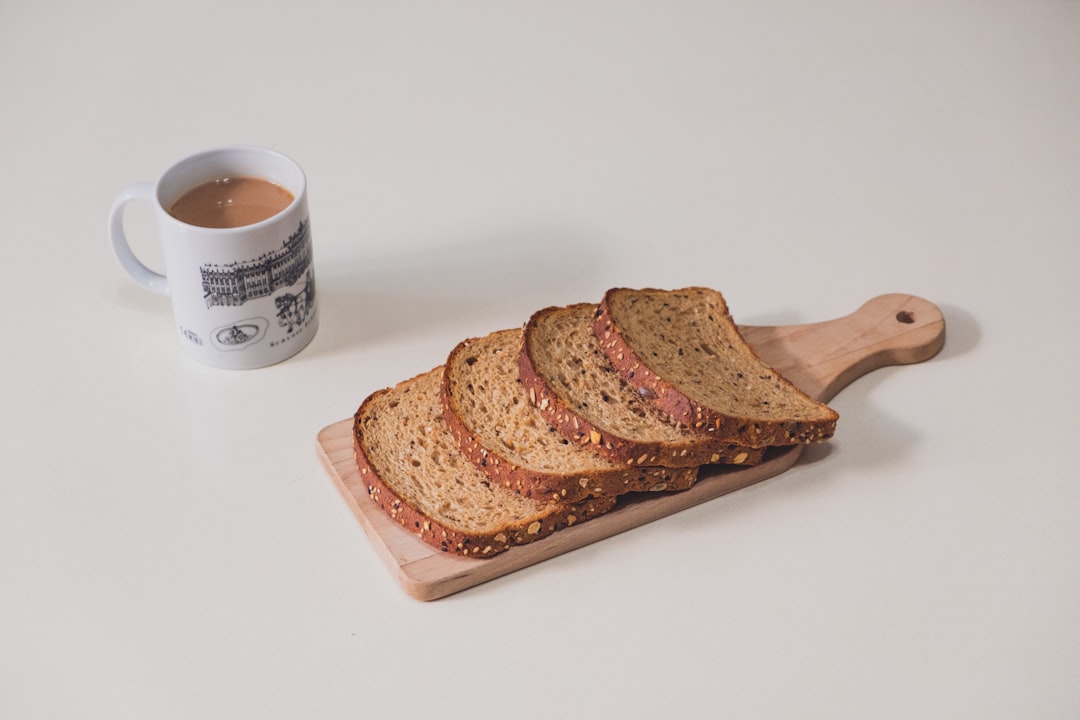As you navigate the journey of aging, the choices you make regarding your diet can significantly impact your overall health and well-being. Whole grains, often overlooked in favor of more processed options, are a vital component of a balanced diet that can enhance your quality of life as you age. These grains retain their bran, germ, and endosperm, providing a wealth of nutrients that support bodily functions and promote longevity.
By incorporating whole grains into your meals, you can harness their potential to improve your health and stave off age-related ailments. The importance of whole grains in your diet cannot be overstated. They are rich in essential nutrients such as fiber, vitamins, and minerals, which play a crucial role in maintaining your health as you grow older.
Research has shown that a diet high in whole grains can reduce the risk of chronic diseases, including heart disease, diabetes, and certain cancers. As you age, your body requires more attention to nutrition, making it essential to focus on foods that offer maximum benefits. Whole grains not only provide energy but also contribute to better digestion, weight management, and overall vitality.
Key Takeaways
- Whole grains are an important part of a healthy aging diet
- Whole grains offer numerous benefits for aging individuals, including improved heart health and reduced inflammation
- Quinoa is a nutrient-packed whole grain that provides essential vitamins and minerals for healthy aging
- Oats are a heart-healthy whole grain option that can help lower cholesterol and reduce the risk of heart disease
- Brown rice is a fiber-rich whole grain that supports digestive health and overall well-being
The Benefits of Whole Grains for Aging
Incorporating whole grains into your diet offers numerous benefits that can enhance your health as you age. One of the most significant advantages is their high fiber content. Fiber is essential for maintaining a healthy digestive system, which can become sluggish with age.
By consuming whole grains, you can promote regular bowel movements and prevent constipation, a common issue among older adults. Additionally, fiber helps regulate blood sugar levels, reducing the risk of type 2 diabetes—a condition that becomes increasingly prevalent as you age. Whole grains also play a vital role in heart health.
They are known to lower cholesterol levels and reduce blood pressure, both of which are critical factors in preventing cardiovascular diseases. As you age, your heart health becomes increasingly important, and incorporating whole grains into your meals can be a proactive step toward maintaining a healthy heart. Furthermore, the antioxidants found in whole grains help combat oxidative stress and inflammation, which are linked to various age-related diseases.
By choosing whole grains, you are not only nourishing your body but also taking steps to protect it from the ravages of time.
Quinoa: A Nutrient-Packed Whole Grain

Quinoa has gained popularity in recent years as a superfood, and for good reason. This ancient grain is packed with nutrients that make it an excellent choice for healthy aging. Unlike many other grains, quinoa is a complete protein, meaning it contains all nine essential amino acids your body needs for optimal function.
This is particularly beneficial for older adults who may struggle to get enough protein in their diets. By incorporating quinoa into your meals, you can support muscle health and maintain strength as you age. In addition to its protein content, quinoa is rich in vitamins and minerals such as magnesium, iron, and B vitamins.
These nutrients play crucial roles in energy production and overall metabolic function. Magnesium, for instance, is essential for bone health—a significant concern as you age. By adding quinoa to your diet, you not only enjoy its nutty flavor but also provide your body with the tools it needs to thrive during the aging process.
Whether you use it in salads, soups, or as a side dish, quinoa is a versatile grain that can easily fit into your daily meals.
Oats: A Heart-Healthy Whole Grain Option
| Health Benefit | Details |
|---|---|
| High in Fiber | Oats are a good source of fiber, which can help lower cholesterol levels and improve heart health. |
| Rich in Antioxidants | Oats contain antioxidants that may help reduce inflammation and lower the risk of heart disease. |
| Low in Saturated Fat | Oats are naturally low in saturated fat, making them a heart-healthy choice. |
| May Lower Blood Pressure | Some studies suggest that the beta-glucan in oats may help lower blood pressure. |
Oats are another fantastic whole grain that deserves a prominent place in your diet as you age. Known for their heart-healthy properties, oats are rich in soluble fiber called beta-glucan. This type of fiber has been shown to lower cholesterol levels and improve heart health—two critical factors for aging individuals.
By starting your day with a warm bowl of oatmeal or incorporating oats into smoothies and baked goods, you can take significant strides toward maintaining cardiovascular health. Moreover, oats are packed with antioxidants known as avenanthramides, which have anti-inflammatory properties. Chronic inflammation is often linked to various age-related diseases, including arthritis and heart disease.
By consuming oats regularly, you can help combat inflammation in your body and promote overall wellness. Their versatility allows you to enjoy oats in various forms—whether as overnight oats, granola bars, or even savory dishes—making it easy to reap their benefits while enjoying delicious meals.
Brown Rice: A Fiber-Rich Whole Grain for Healthy Aging
Brown rice is a staple whole grain that offers numerous health benefits for those looking to age gracefully. Unlike white rice, brown rice retains its bran and germ layers, making it a rich source of fiber and essential nutrients. The high fiber content aids digestion and helps maintain a healthy weight—an important consideration as metabolism tends to slow down with age.
By choosing brown rice over its white counterpart, you can enjoy a more satisfying meal while supporting your digestive health. In addition to its fiber content, brown rice is an excellent source of magnesium and selenium—two minerals that play vital roles in maintaining overall health. Magnesium supports bone health and muscle function, while selenium acts as an antioxidant that helps protect your cells from damage.
Incorporating brown rice into your meals can be as simple as using it as a base for stir-fries or grain bowls. Its nutty flavor and chewy texture make it a delightful addition to any dish while providing essential nutrients that support healthy aging.
Barley: A Whole Grain with Anti-Inflammatory Properties

Barley is often overlooked but is a powerhouse of nutrition that can significantly benefit your health as you age. This ancient grain is rich in beta-glucans and other soluble fibers that help lower cholesterol levels and improve heart health. Additionally, barley contains antioxidants that combat oxidative stress and inflammation—two factors that contribute to many age-related diseases.
By incorporating barley into your diet, you can take proactive steps toward reducing inflammation in your body. One of the unique aspects of barley is its versatility; it can be used in soups, stews, salads, or even as a side dish. Its chewy texture adds depth to meals while providing essential nutrients that support healthy aging.
Furthermore, barley is low on the glycemic index, making it an excellent choice for those looking to manage blood sugar levels—a crucial consideration for older adults at risk of diabetes. By making barley a regular part of your diet, you can enjoy its numerous health benefits while savoring delicious meals.
Buckwheat: A Gluten-Free Whole Grain Option for Healthy Aging
If you’re seeking a gluten-free whole grain option that packs a nutritional punch, look no further than buckwheat. Despite its name, buckwheat is not related to wheat and is entirely gluten-free, making it suitable for those with gluten sensitivities or celiac disease.
The high fiber content in buckwheat aids digestion and helps regulate blood sugar levels—important factors for maintaining overall health as you age. Additionally, buckwheat contains rutin, an antioxidant that has been shown to improve circulation and support heart health. You can enjoy buckwheat in various forms—such as groats in salads or pancakes—allowing you to incorporate this nutritious grain into your meals easily while reaping its benefits.
Farro: A Whole Grain High in Protein and Fiber
Farro is an ancient grain that has been cherished for centuries due to its impressive nutritional profile. This whole grain is high in both protein and fiber—two essential components for maintaining muscle mass and digestive health as you age.
In addition to its protein and fiber content, farro is rich in vitamins and minerals such as iron and zinc—nutrients that play crucial roles in energy production and immune function. As you age, maintaining a strong immune system becomes increasingly important; farro can help provide the necessary nutrients to support this goal. You can use farro in salads, soups, or grain bowls—making it a versatile addition to your meals while promoting healthy aging.
Millet: A Whole Grain Rich in B Vitamins for Healthy Aging
Millet may not be as well-known as some other whole grains but deserves recognition for its impressive nutritional benefits—especially for those looking to age gracefully. This gluten-free grain is rich in B vitamins such as niacin and folate—nutrients essential for energy production and brain health. As cognitive function often declines with age, incorporating millet into your diet can help support mental clarity and overall well-being.
Furthermore, millet is an excellent source of magnesium—a mineral crucial for bone health and muscle function. As you age, maintaining strong bones becomes increasingly important; millet can contribute to this goal while providing a delicious addition to your meals. You can enjoy millet in various forms—such as porridge or pilaf—allowing you to reap its benefits while savoring flavorful dishes.
Spelt: A Nutrient-Dense Whole Grain for Aging Well
Spelt is an ancient grain that has gained popularity due to its impressive nutritional profile and unique flavor. This whole grain is rich in protein, fiber, vitamins, and minerals—making it an excellent choice for those looking to support their health as they age. The high protein content in spelt helps maintain muscle mass—a crucial factor for overall strength and mobility.
In addition to its protein content, spelt contains essential nutrients such as iron and zinc—important for energy production and immune function. As you navigate the aging process, ensuring your body receives adequate nutrition becomes increasingly important; spelt can help provide the necessary nutrients while adding depth to your meals. You can use spelt flour in baking or enjoy cooked spelt grains in salads or side dishes—making it a versatile option for healthy aging.
Amaranth: A Whole Grain Packed with Antioxidants for Healthy Aging
Amaranth is another ancient grain that deserves recognition for its impressive nutritional benefits—especially for those focused on healthy aging. This gluten-free grain is packed with antioxidants such as quercetin and kaempferol—compounds known for their anti-inflammatory properties. By incorporating amaranth into your diet, you can help combat oxidative stress and reduce inflammation—a crucial consideration for maintaining overall health as you age.
In addition to its antioxidant content, amaranth is rich in protein and fiber—two essential components for supporting muscle mass and digestive health. The high protein content makes amaranth an excellent choice for those looking to maintain strength while enjoying delicious meals. You can use amaranth in various forms—such as porridge or added to soups—allowing you to reap its benefits while savoring flavorful dishes that promote healthy aging.
In conclusion, embracing whole grains like quinoa, oats, brown rice, barley, buckwheat, farro, millet, spelt, and amaranth can significantly enhance your health as you age. Each grain offers unique nutritional benefits that contribute to overall well-being while providing delicious options for your meals. By making these whole grains a staple in your diet, you’re not just nourishing your body; you’re investing in a healthier future filled with vitality and longevity.
Incorporating whole grains into the diet is essential for older adults, as they provide vital nutrients and fiber that support overall health. A related article on this topic can be found on Explore Senior Health, which offers insights into the best whole grains for seniors and their numerous health benefits. For more detailed information, you can read the full article by visiting Explore Senior Health. This resource provides valuable guidance on how to include whole grains in daily meals, ensuring that older adults can maintain a balanced and nutritious diet.
WATCH THIS!🧠 The Breakfast Mistake That Fuels Senior Memory Loss
FAQs
What are whole grains?
Whole grains are grains that contain all parts of the grain kernel – the bran, germ, and endosperm. This means they contain more nutrients and fiber compared to refined grains.
Why are whole grains important for older adults?
Whole grains are important for older adults because they provide essential nutrients such as fiber, vitamins, and minerals. They can also help reduce the risk of chronic diseases such as heart disease, diabetes, and certain types of cancer.
What are the best whole grains for older adults?
The best whole grains for older adults include quinoa, brown rice, oats, barley, bulgur, and whole wheat. These grains are high in fiber, protein, and various nutrients that are beneficial for older adults.
How can older adults incorporate whole grains into their diet?
Older adults can incorporate whole grains into their diet by choosing whole grain breads, cereals, and pastas. They can also include whole grains such as brown rice, quinoa, and barley in their meals.
How much whole grains should older adults consume?
The Dietary Guidelines for Americans recommend that at least half of the grains consumed should be whole grains. For older adults, this translates to about 3-5 servings of whole grains per day, depending on their calorie needs.
Are there any potential risks of consuming whole grains for older adults?
While whole grains are generally beneficial for older adults, some individuals may experience digestive issues when increasing their intake of fiber-rich foods. It’s important to gradually increase whole grain consumption and drink plenty of water to help prevent any discomfort.
